|
109. Argynnis paphia (Linnaeus, 1758) / Silver-washed fritillary / Nymphalidae –Heliconiinae
NL: keizersmantel / D: Kaisermantel / F: tabac d’Espagne
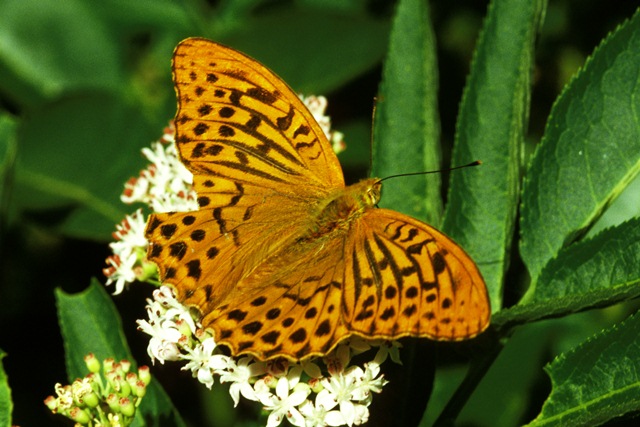 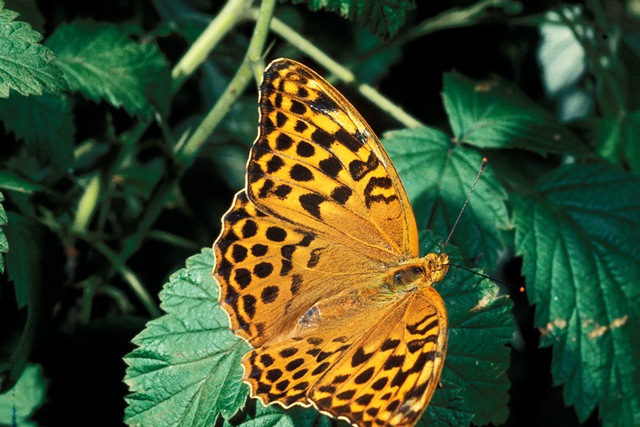 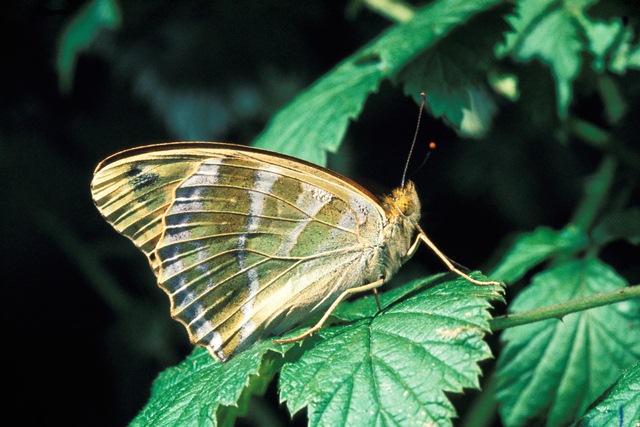
Photographs: Frits Bink ©.
Large, wing length 33 (27-35) mm. In the Benelux, the species occurs widely spread in the woodlands of Luxemburg and Wallonia, in Flanders and the Netherlands it is a vagrant that may establish local populations for a couple of years. Recently the species has been recorded also from the Dutch coastal dunes.
Butterfly is on the wing from end-June until end-August. The species is known from maritime to severe continental climates, amplitude 4 to 20. Required heat sum is 400°d and maximum tolerated 2000°d, corresponding climate windows are 19 and 38 weeks.
It is the biggest of our fritillaries, the strongest migrator and the one with the longest life span. It has the most complex courtship: the female can invite the male, also the male can seduce the female by following her, diving under her and letting her pass under him; this procedure may be repeated several times.
This species is an inhabitant of a wooded landscape and find its way easily to small spots with violets on warm sites at the edge of the wood or scrub.
Ecological characteristics
Behaviour over time
Overwintering: fresh born larva, 1.5 mm in size, hidden in the grooves of tree bark.
Reproduction: oviposition starts after 5-18 days when the body contains 56 (45-62) eggs, potential production 7 times as much.
Larval feeding periods: 55 (44-59) days in the period from mid-April until end-June.
Generations: one.
Spreading of risk: spread in larval development, long lifespan of the adult and exploration behaviour or migration of the female safeguards the species from unpredictable disasters.
Life cycle: egg 17 (14-19) days; larva 39-44 weeks; pupa 18 (14-25) days.
Life span of adult: very long, up to 6 weeks.
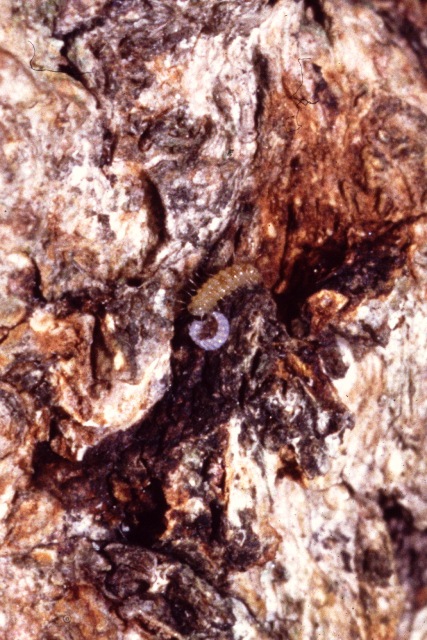 
Photographs: Frits Bink ©.
Behaviour in space
From stay-at-home to migrant: nomad, spatial requirement considerable.
Finding a mate: patrols and displays an extraordinary courtship.
Orientation in the landscape: complex landscape of woodland or scrub interspersed with open spots or luxurious growth along brooks.
Oviposition: on the bark of twigs or tree in close proximity to violets.
Defence
Threats from other organisms: the larva is armoured with big spines, the pupa with silvery spots.
Threats from the environment: both larva as adults live only in mild and temperate environment, so they seem to be rather vulnerable.
Feeding habits
Adult: nectar of all kind of flowers, in particular those of danewort (Sambucus ebulus).
Larva: in early spring the larvae feeds only on buds or young flowers, later on old leaves and fruits of the violets.
Larval foodplants
Plant species: Violaceae, Viola hirta, V. odorata, V. reichenbachiana, V. riviniana, V. tricolor.
Journal
Rearing experiment based on specimen from Gräsö, Sweden:
17 August 1985: female captured.
20 August: most of the eggs were laid on the bark of a twig.
5 September: eggs hatched and the larvae ate a large part of their egg shells.
Overwintered outdoors.
16 March 1986: larvae put on a Viola hybrid.
23 March: started to feed.
31 March: half of the larvae in second instar.
19 April: two larvae fourth instar.
27 April: first fifth instar seen.
6 May: first larva pupated.
10 May: three larvae pupated.
15 May: last larva pupated.
22 May: first adult appeared.
26 May: four pupae hatched, two males and two females.
30 May: last pupa hatched, male.
11 June: first female laid eggs.
12 June: second female started to oviposit, and laid six eggs.
Table 109-1. Results of dissections

Table 109-2. Collection and observation localities
B, Ethe, 240 m, 49° 36’ 25”N – 5° 35’ 50”E; 11 July 1984.
EST, Endla Nature Reserve, 58° 52 34”N – 26° 16’21”E; 10 July 1999.
EST, Viruna, 58° 28’ 51”N – 23° 58’ 32”E; 5 July 1999.
F, Aurel, 400 m, 44° 43’N – 5° 16’E; 29 August 1984, 2 September 1984.
F, Haut-Languedoc, 43° 29’N – 8° 45’E; 28 September 1980.
F, Montmédy, 217 m, 49° 31’ 07”N – 5° 21’ 33” E; 12 June 1984, 18 August 1984.
F, Pagny-la-Blanche-Côte, 322 m, 48° 32’ 01”N – 5° 44’ 14”E; 7 July 2006.
S, Gotland, Russväter, 57° 23’ 29”N – 18° 43’ 36”E; 16 July 2004.
S, Öland, Frösslunda, 56° 32’ 34”N – 16° 35’ 12”E; 22 July 2004.
S, Öland, Stenåsa, 56° 32’ 44”N – 16° 36’ 43”E; 7 July 1982, 15 August 1983, 21 July 2004.
S, Östhammar, Gräsö, 60° 23’ 01”N – 18° 26’ 51”E; 19 August 1985.
Fig. 109-1. Argynnis paphia, phenogram adapted from Fichefet et al. 2008: 179.
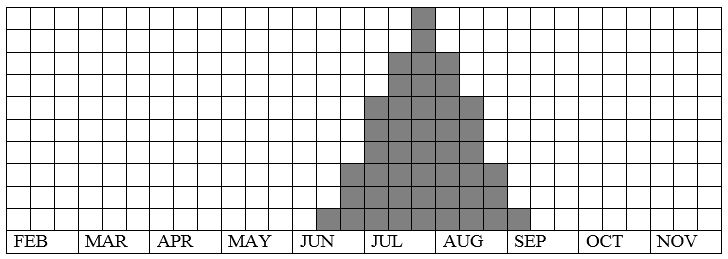
Fig. 109-2. Argynnis paphia, habitat characteristics.
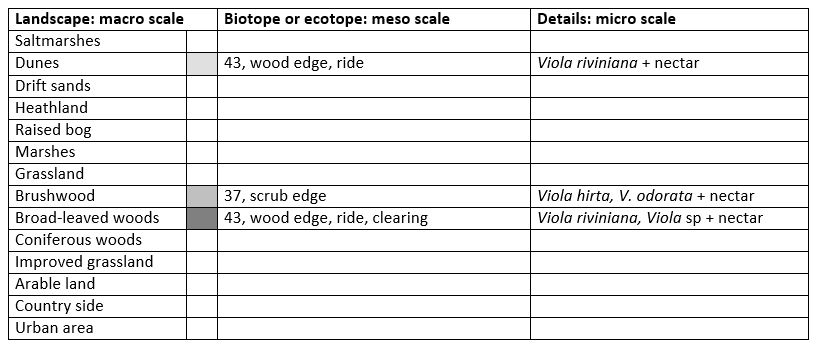
Fig. 109-3. Argynnis paphia, climate matrix, heat-sums 400 - 2000°d.
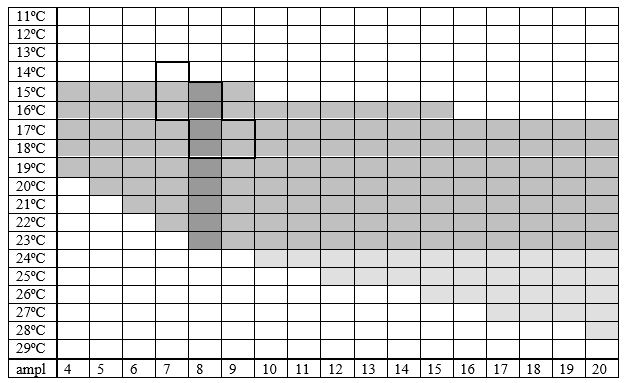
|










